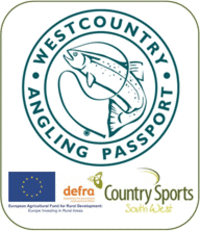The River Tone, located in Somerset, spans approximately 21 miles in length. Its source can be found at Beverton Pond near Huish Champflower in the Brendon Hills. The river is impounded by Clatworthy Reservoir, and its outfall continues through Taunton and Curry and Hay Moors, which hold the designation of a Site of Special Scientific Interest. The catchment area of the river covers approximately 414 square kilometers (160 sq mi), and the average daily flow for the entire catchment is estimated to be 4.76 cubic meters per second (168 cu ft/s). The river is nourished by tributaries such as Hillfarrance Brook, Halse Water, Haywards Water, Three Bridges Stream, Sherford Stream, and Broughton Brook. During dry periods, controlled releases from Clatworthy and Luxhay Reservoirs supplement the river's flow. Tributaries from the south, originating in the Blackdown Hills, also contribute water to the Tone..This camera was installed and is maintained by the Environment Agency and can be viewed
here All content is available under the
Open Government Licence v3.0. The highest level ever recorded at the River Tone at Bishops Hull is 2.59m, reached on Monday 30th October 2000 at 8:59am. The source of the river lies within the Brendon Hills, which fall within the boundaries of Exmoor National Park. Unlike the neighboring upland areas of Exmoor and the Quantock Hills, the Brendon Hills are predominantly cultivated. These hills consist largely of the Morte Slates, a substantial sequence of faulted and folded sedimentary rocks from the Devonian period. As the river progresses, it passes through an alluvial floodplain consisting of sub-alluvial gravels, underlain by rocks belonging to the Mercia Mudstone Group. The floodplain's elevation ranges from 5 meters (16 ft) to 50 meters (160 ft) above the ordnance datum (mean sea level). Surrounding the river, the landscape is characterized by wet meadows and wooded areas, with willow trees being prominent.Water quality in the river can be influenced by dredging activities. The River Tone eventually meets the River Parrett at Burrowbridge. In 1699, an act of Parliament was granted to make the river navigable up to Taunton. The act stipulated that the profits should benefit the poor of Taunton. However, the Proprietors managed to evade their obligations until 1843 when the proceeds from the navigation's sale were used to support a wing of the Taunton and Somerset Hospital and assist the Taunton Market Trust.



